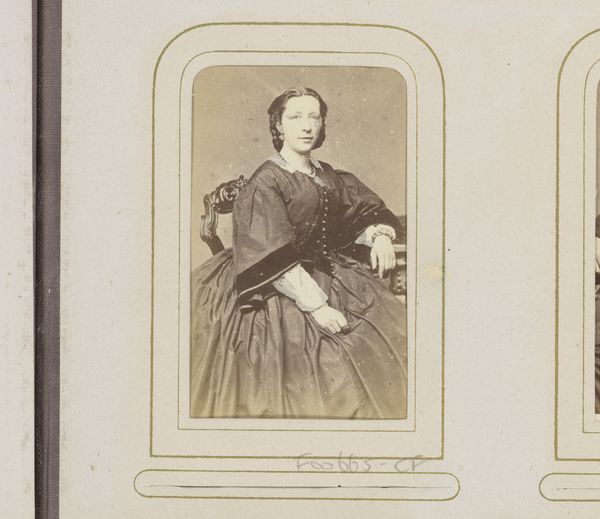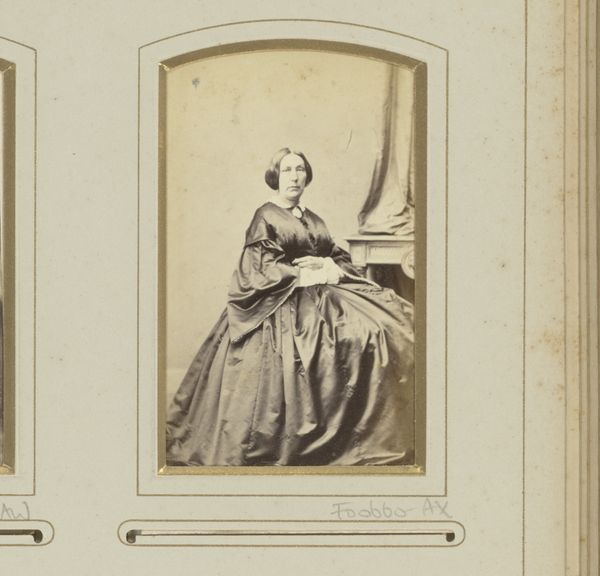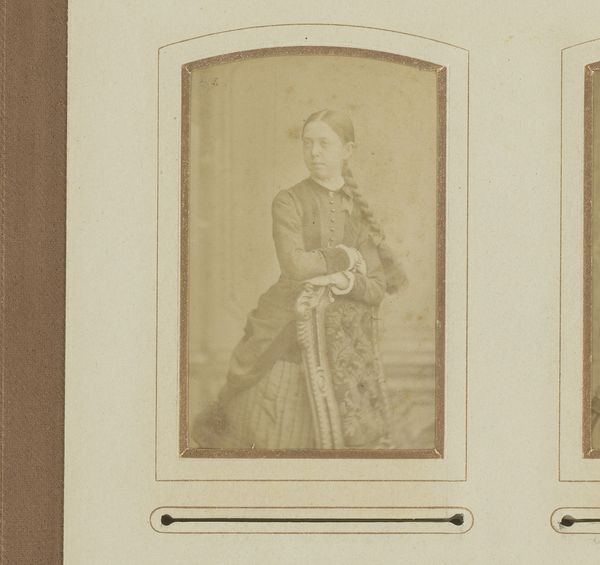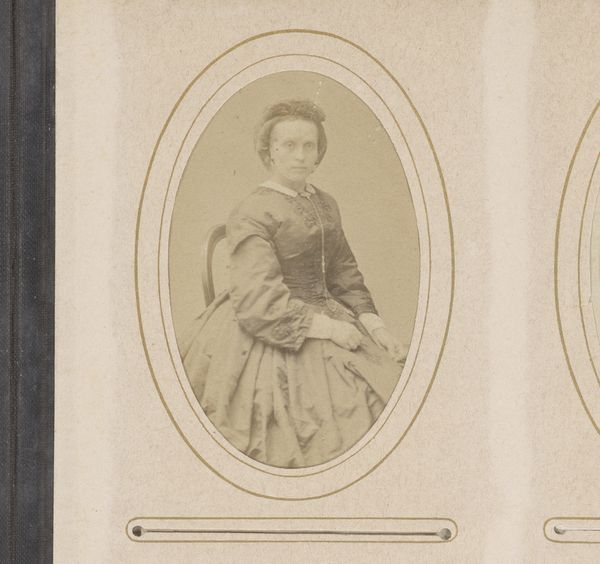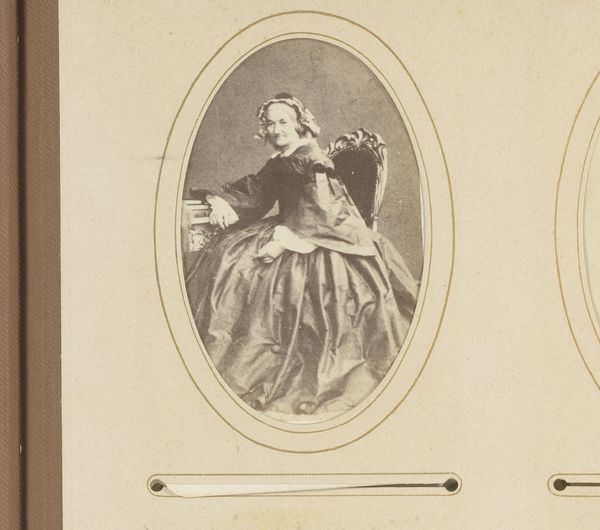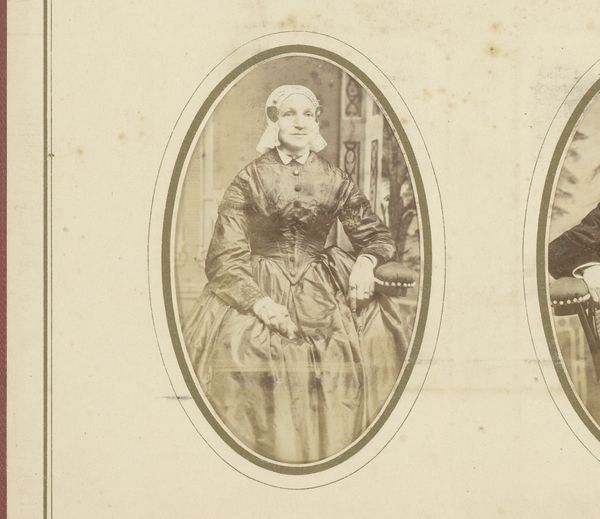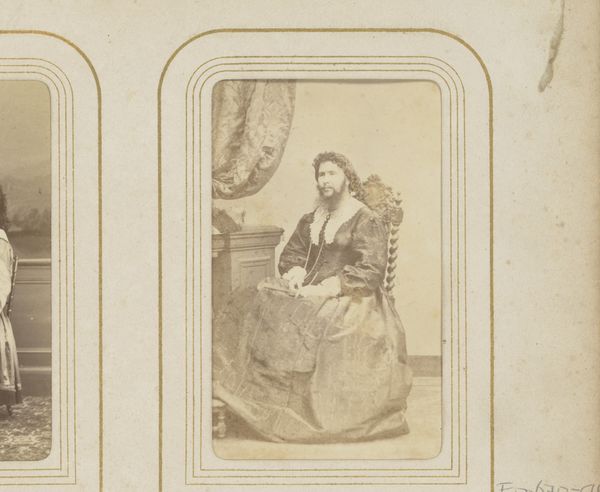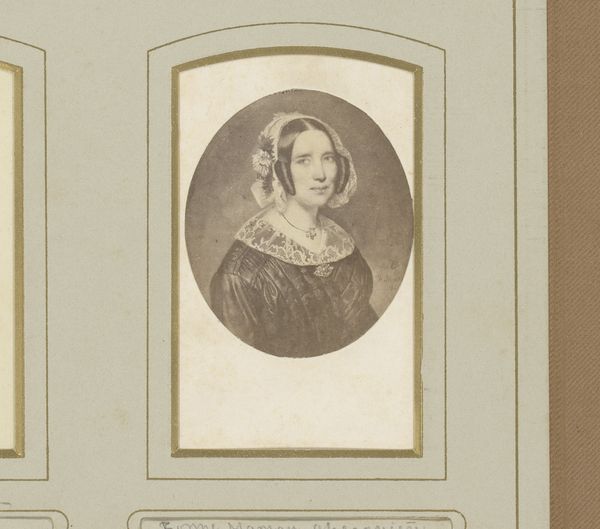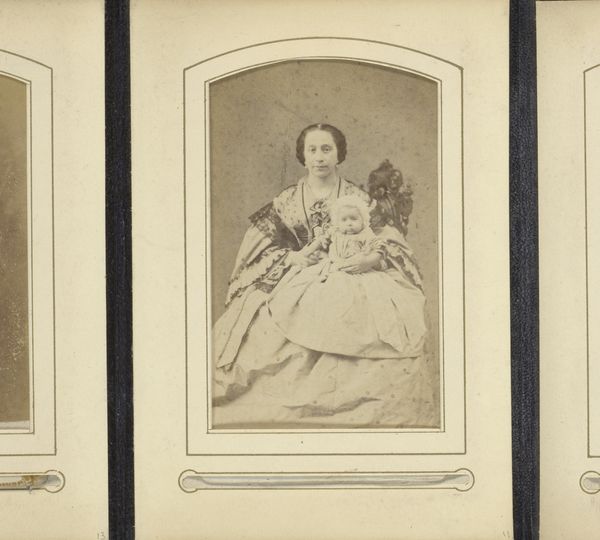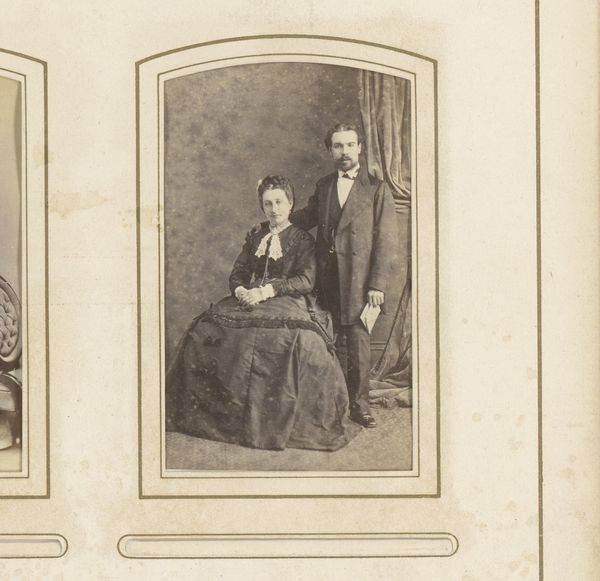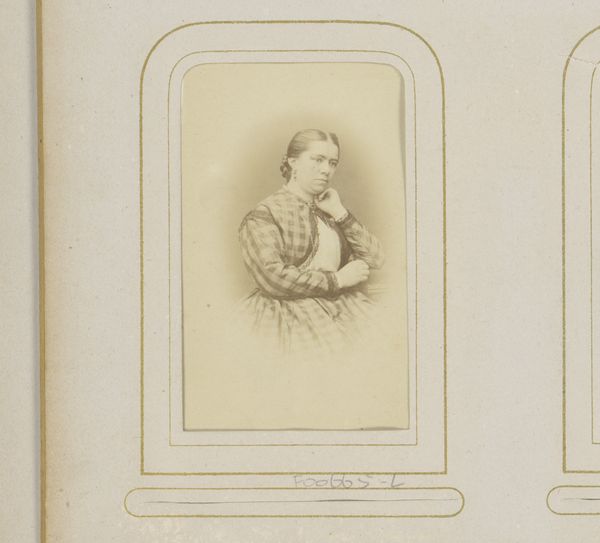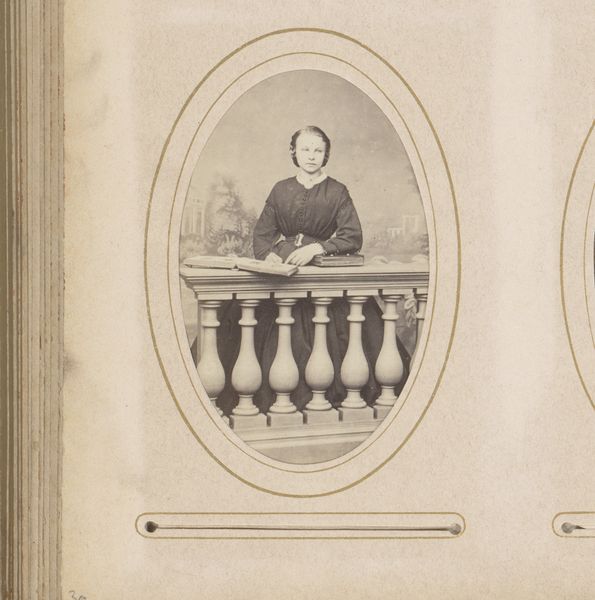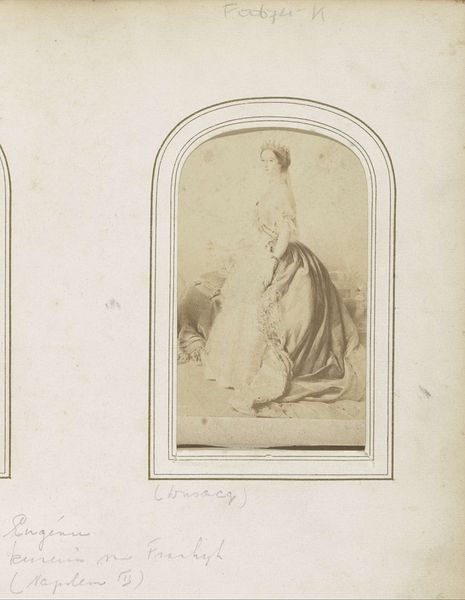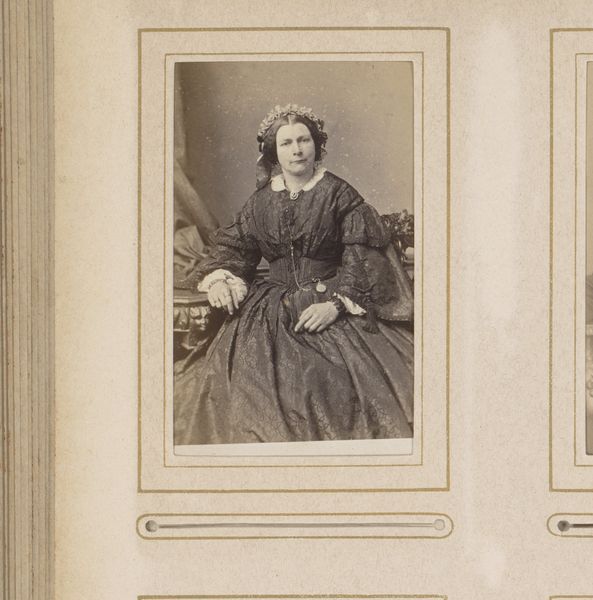
photography, gelatin-silver-print
#
portrait
#
photography
#
gelatin-silver-print
Dimensions: height 84 mm, width 51 mm
Copyright: Rijks Museum: Open Domain
Curator: Here we have "Portret van Louis Suson Pedro Meyboom," an intriguing portrait captured sometime between 1860 and 1874, utilizing the gelatin-silver print technique. Editor: There’s a somber, almost stately feel to this portrait. The sepia tones definitely enhance that, and I immediately notice the subject’s formal attire - the gown seems almost weighty, visually. Curator: The materials are definitely significant here. The gelatin-silver process itself, becoming commercially viable around this time, democratized portraiture. Consider the socio-economic implications of this accessibility; it offered new forms of visual representation to wider segments of the population. Editor: I’m drawn to the tonal gradations - the way the light falls across his face and the heavy folds of his robe creates a complex interplay of dark and light. The composition, the gaze of the subject, all funnel toward the center. Semiotically, there's the contrast between the severe black and the pristine white collar implying formality. Curator: The attire speaks to institutional power. It’s not merely clothing, it’s a signifier of status, authority, and perhaps intellectual labor. Examining clothing allows for inferences about professions. Who did the portrayed subject associate with? How much labor went into making the gown itself, from material to production to use? Editor: Indeed, the gown does hold this structural and metaphorical importance. There's also something to be said about his hands; holding what appears to be a document of some kind. These aspects combined provide symbolic meaning. It adds another layer to deciphering the represented social standing of Meyboom. Curator: Ultimately, these photographic prints became powerful cultural commodities. Beyond individual likeness, they were a way to participate in broader social narratives about class, respectability, and the distribution of images as property. Editor: Absolutely, considering the play of light, shadow, and texture enhances our appreciation for both its aesthetic construction and deeper symbolic resonance. It encourages us to investigate form and materiality but the relationship to the culture of photography.
Comments
No comments
Be the first to comment and join the conversation on the ultimate creative platform.
